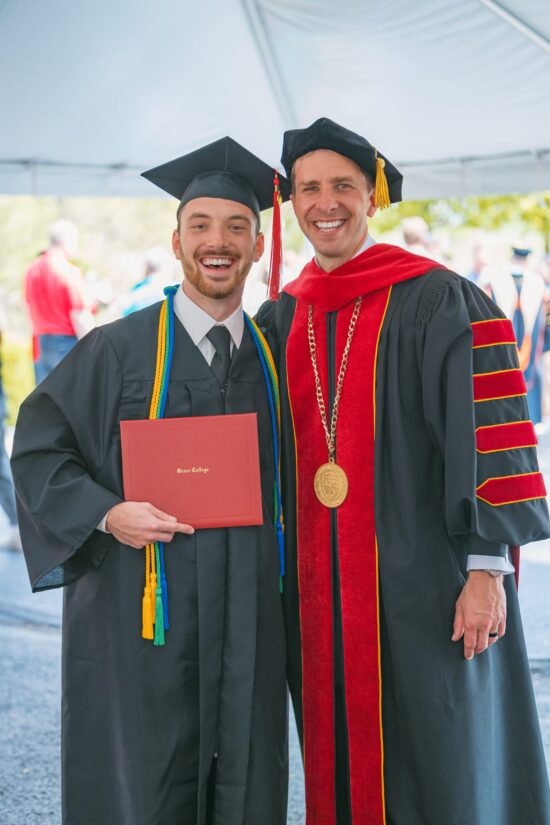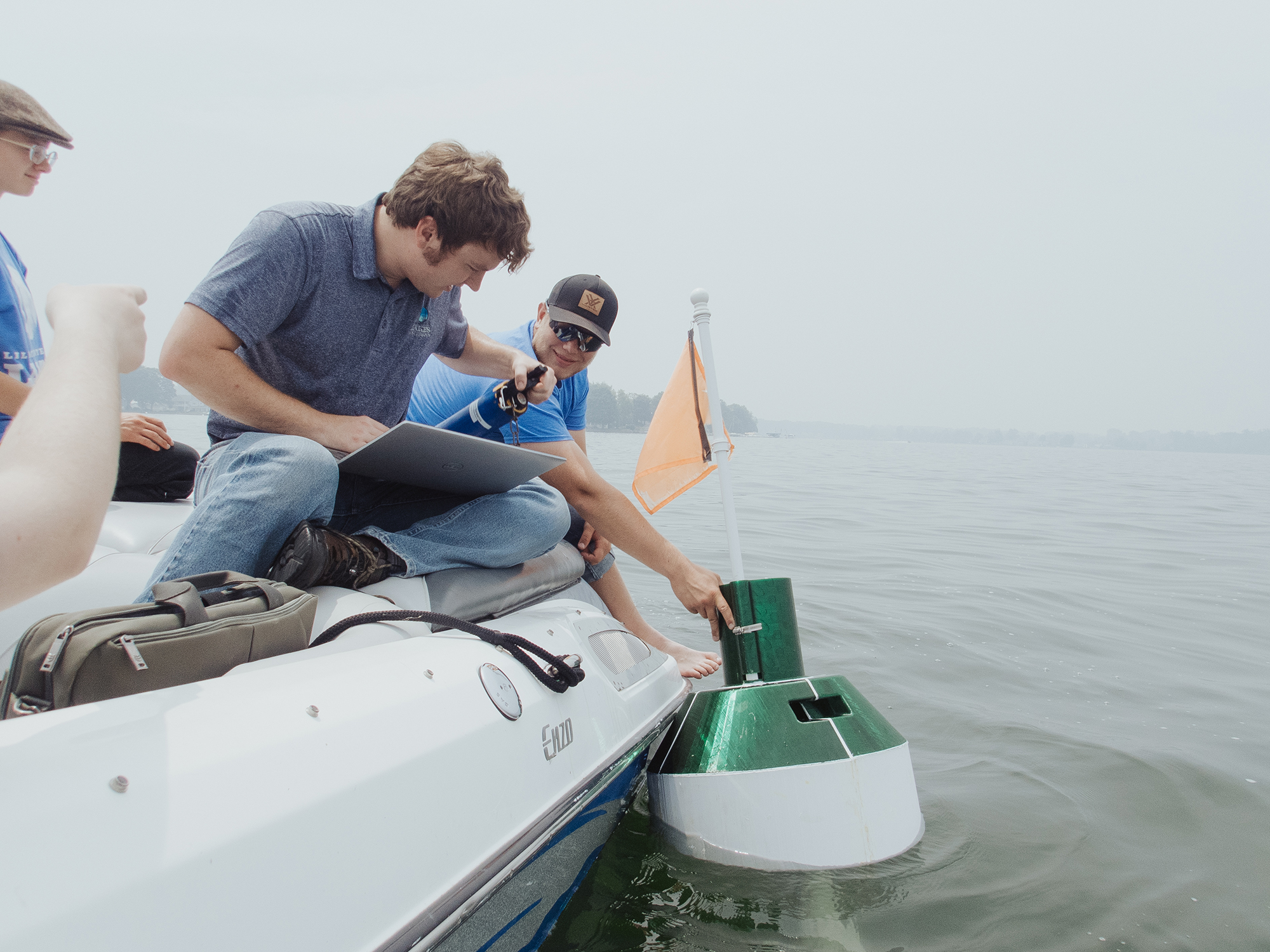The Lilly Center installs its research buoy on Lake Wawasee for the second year in a row! Thanks to several generous supporters, this buoy is providing vast amounts of round-the-clock data to help unlock the mysteries of Lake Wawasee.
For over 15 years, the Lilly Center for Lakes & Streams has conducted studies and routine testing on Kosciusko County’s lakes and streams, including Lake Wawasee and its inflowing and outflowing streams. Each summer, lake sampling occurs on 14 local lakes once a week from June through August. But what if there was a way to look at the lake between samplings, a way that could show us patterns that we may not have otherwise seen?
“A research buoy on one of our lakes is key to making our county’s lakes healthier,” explains Dr. Nate Bosch, Lilly Center director. “It’s a strategic solution to understanding one of the major challenges on our lakes: algae toxins. We’re thankful for generous supporters and partners who made this idea a reality.”
The idea for this custom research buoy came from conversations with Alex Levinson and Alan Tehan. The buoy itself was made in collaboration with the Department of Engineering at Grace College. The sensor array beneath the buoy, the part that gathers the data, is a specialized piece of monitoring equipment similar to the one used for routine lake sampling.
According to research technician Jed Harvey, “The buoy’s sensor array collects several hundred data points each day. It measures parameters like pH, conductivity, and dissolved oxygen every 15 minutes. The buoy is also able to track different algae types through a process called fluorescence.”
What have we learned from the buoy so far? The short answer is: it’s complicated! Gathering enough data to comprehensively understand something as complex as Lake Wawasee takes years, even decades. However, the information we collect from the buoy will help us create a “temporal profile” of Lake Wawasee as it changes over time.
“This information will continue to expand our knowledge of how algae, nutrients, and other water quality parameters vary over time,” explains Matt Burlingame, assistant director of research. “It will give us additional insight into how these conditions impact microcystin toxin production in our lakes.”
In the meantime, the buoy continues to collect daily data from Lake Wawasee. In conjunction with other research conducted by the Lilly Center, this data is a piece of the puzzle to better understand how to make Kosciusko County’s lakes clean, healthy, safe, and beautiful.
If the success continues, we may expand lake buoy monitoring to other locations or lakes. For now, this pilot project will remain only on Lake Wawasee.
So, next time you are out on Lake Wawasee, keep an eye out for the green buoy and its orange flag in Natti Crow Bay. Spread the word and help keep the hourly data flowing for years to come. Thanks to the continuation of this project, we’re one step closer to understanding Lake Wawasee’s secrets.
A special thank you to Jeff Herdrich, who made the buoy installation possible.
Image attached: Jed Harvey, Lilly Center research technician, and Stephen Foy of the field research team installing the buoy on Lake Wawasee.
The Lilly Center for Lakes & Streams at Grace College conducts research, provides resources, engages and educates residents, and collaborates with local organizations to make the lakes and streams of Kosciusko County clean, healthy, safe, and beautiful. To date, the Lilly Center has conducted scientific research on over 30 streams and 40 lakes. The Lilly Center is driven to create a legacy of stewardship by equipping community members, visitors, and future generations with understanding and to enjoy the county’s natural beauty. For more information, visit lakes.grace.edu.




